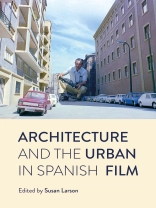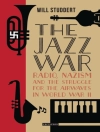This will be the first edited collection in English on urban space and architecture in Spanish popular film since 1898. Building on existing film and urban histories, this innovative volume will examine Spanish film through contemporary interdisciplinary theories of urban space, the built environment, visuality and mass culture from the industrial through to the digital age.
Architecture and Urbanism in Spanish Film brings together the innovative scholarship of an international and interdisciplinary group of film, architecture and urban studies scholars thinking through the reciprocal relationship between the seventh art and the built environment. Some of the shared concerns that emerge from this volume include the ways cinema as a new technology reshaped how cities and buildings are built and inhabited since the early twentieth century; the question of the mobile gaze; film’s role in the shifting relationship between the private and the public; film and everyday life; monumentality and the construction of historical memory for a variety of viewing publics; the impact of the digital and the virtual on filmmaking and spectatorship.
Primary readership will be those researching, teaching and studying Spanish film, international film studies, urban cultural studies, cultural studies, and architects who are interested in interdisciplinary endeavours.
Table of Content
List of Figures
Acknowledgments
Introduction Architecture, the Urban and the Critical Possibilities of Spanish Film Studies
Susan Larson
PART 1: ARCHITECTURE AND THE URBAN
1.Architecture, Urbanistic Ideology and the Poetic- Analytic Documentary Mode in Mercado de futuros (2011) by Mercedes Álvarez
Benjamin Fraser
2.Establishing Shots as Urban Blueprints in Spanish Feature Films
Jorge Gorostiza
PART 2: MOBILITY
3.The Rhythm of the Modern City: Traffic and Mobility in Spanish Film, 1896– 1936
Nuria Rodríguez- Martín
4.Childhood Spectacle, Modernity and Madrid as a Dystopic City: Luis Lucia’s Cerca de la ciudad (1952)
David Foshee
Elevators and the Poetics of Vertical Mobility in Spanish Film
Tom Whittaker
PART 3: SURFACE TENSIONS
6. An Archi- Texture of Pleasure: The Verbena, the Modistilla and the Mantón de Manila in Rosa de Madrid (1927)
Juli Highfill
7. Surface Tension and Utopian Underworlds: Orpheus and the Executioner in Luis García Berlanga’s El verdugo (1963)
Patricia Keller
PART 4: THE EVERYDAY
8. Mediating Everyday Life: Domestic Architecture in Spanish Film
Josefina González Cubero and Alba Zarza Arribas
9. Through the Looking Glass: Images of the Ordinary World in Oscar- Nominated Spanish Cinema
Emeterio Diez Puertas and María de Arana Aroca
PART 5: MEMORY AND THE MONUMENTAL
10. Who and What Was José Antonio Nieves Conde Criticizing in the Film El inquilino (1957)?
Susan Larson and Carlos Sambricio
11. Madrid 1964: Icon of Modernity or City of Memory? A Look at the ‘Details’
Vicente Sánchez- Biosca
12. Making Madrid Plastic: Waste and Space in Pedro Almodóvar’s Post- movida Films
Samuel Amago
PART 6: THE VIRTUAL
13. Uncanny Urbanism and Generational Shifts in Carlos Marques Marcet’s 10.000km and Anchor and Hope
Leigh Mercer
14. Dead to Capitalism: Zombified Territory and Junkie Spaces in Cabanyal Z, or How to Unleash Monstrous Creativity in the Urban
Stephen Luis Vilaseca
Notes on Contributors
Index
About the author
Susan Larson is the Charles B. Qualia Chair of Romance Languages and Professor of Spanish Literature, Film, and Cultural Studies at Texas Tech University. She is the author of Constructing and Resisting Modernity: Madrid 1900–1936.












